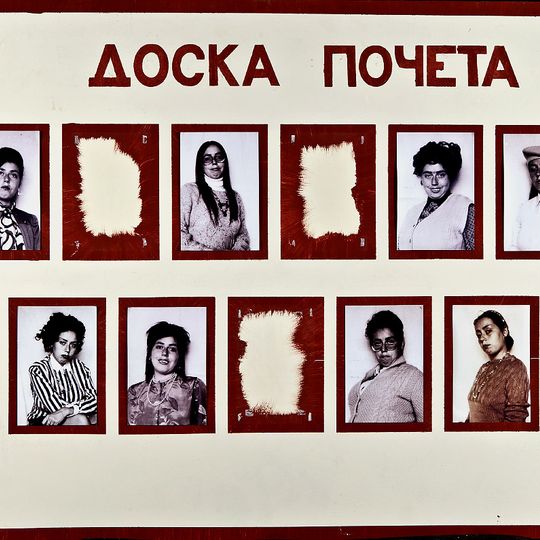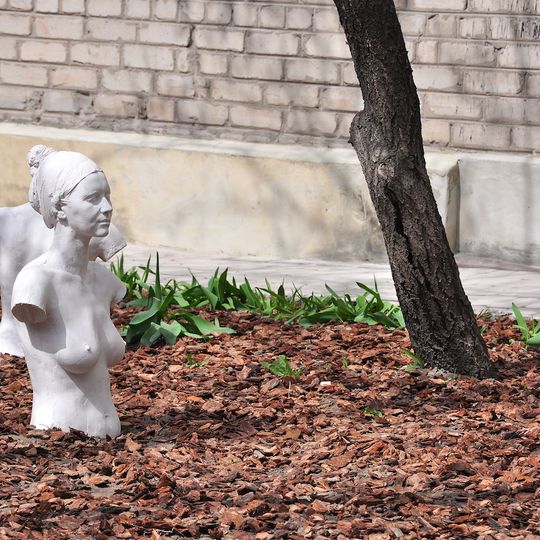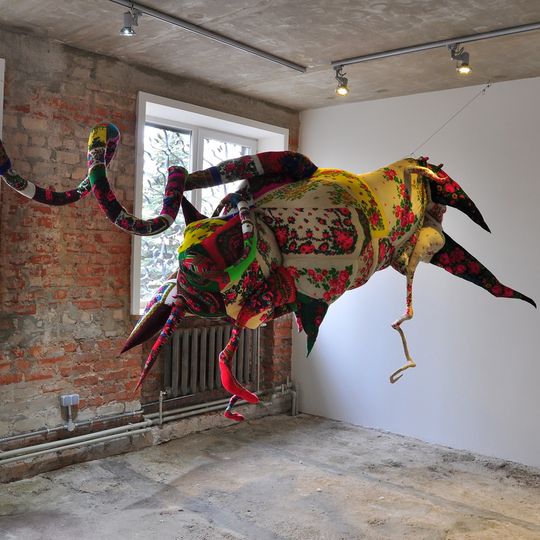Gender in IZOLYATSIA

20 April 2012 — 1 July 2012
Self-fashioning lies at the core of the productive understanding of gender. People are born with some biological differences, yet their behavioral models have no straightforward correlation to their biological sex. People are generally conditioned to think and act in accordance with the gender norms accepted and (re)produced in a particular society. Patriarchy functions as gender police within a dictatorial system, surveilling and enforcing the imposed narrowly defined gender stereotypes. The fascistlike repression of sensitivity towards gender formation leads to socio-cultural neuroses, which trigger violent responses directed both at society and at one’s own subjectivity. A reevaluation of the gender problematics is especially pertinent to the Ukrainian society today, where deep-seated patriarchal assumptions about gender distribution and their recruitment in today’s power struggles are (re)producing a belief system that persecutes difference.
Avoiding an unreflected enumeration of possible Ukrainian gender stereotypes, the exhibition strives to uncover social and psychological mechanisms of gender construction. One group of artists singles out role playing and mimicry as the main constituents of gender performance. Viktoria Myroniuk and Roman Bodnarchuk, Maryna Skugareva, Ksenia Hnylytska, Lada Nakonechna, Alina Kopytsia, Lesia Khomenko and Zhanna Kadyrova try to rationalize and explain why people follow counterproductive and destructive gender patterns. Alina Kleitman, Lubov Malikova, and Masha Kulikovska employ the abject art paradigm to reflect on the experiences of those whose mental and physical wiring does not correspond to the accepted gender roles of a particular society. Oleksiy Salmanov, Masha Shubina, and Synchrodogs Art Collective postulate metaphoric ways of undermining the rigidity and the reproduction of imposed gender patterns.
The exhibition poses the questions where and how to locate a space of psychological freedom in a society with severely prescriptive and narrowly defined gender norms. A brief consideration of Soviet gender myths provides a referential framework for anchoring the current Ukrainian gender mapping to its historical context. Early Soviet ideology propagated a myth of “new people” which blurred gender characteristics and proclaimed sex to be subordinate only to political affiliation. Women were regarded identical to men in their intellectual prowess and productive capacity, thus placed theoretically on an equal footing in the constitution of a new Soviet state. This myth remained utopian tool and a source of ideologically grounded exploitation; its application more often led to the abuse of men and women than to any form of emancipation from the patriarchal order.
However, it would be inaccurate to assert that today's Ukrainian society only exhibits historically inherited patriarchal gender models. Currently there exist pockets of freedom from an absolute necessity to conform, no matter how small and unstable. Where do these fragments of gender emancipation come from and what is their future? By juxtaposing the Soviet gender models to those which exist in 21st century Ukraine, the exhibition attempts to contribute to a construction of an involved discourse on gender fashioning, its repression, manipulation and potential in the contemporary Ukrainian context.
Curator: Olena Chervonik



